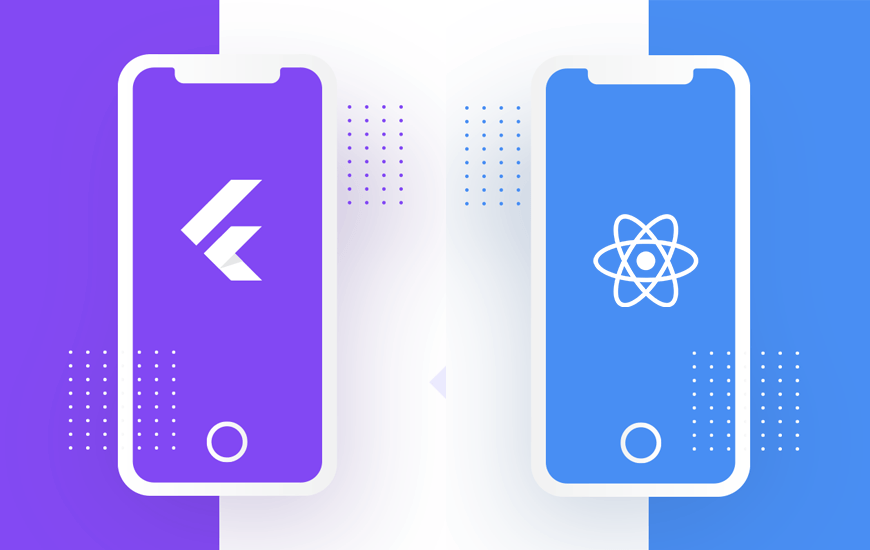There is no second thought that mobile has become of the indispensable parts of our daily routines. From checking news, and scrolling feed to buying some sort of product, now it has become unimaginable to live without our smartphones. Considering this trend, the demand to find a professional mobile app development company in Delhi has also increased. Nowadays, almost all businesses are realizing the importance of mobile applications to build better personal experiences for customers. The development of any business mobile app involves a serious consumption of time in terms of coding, but since the advent of cross-platform development, the scenario seems to have changed. Now using modern technology and advanced tools, you can save your time as well as make the process faster. However, when it comes to choosing the best platform to use either Flutter or React Native remains the choice.
Launched in the year 2015, React Native is the older among these two technologies which is also supported by Facebook, on the other hand, Flutter is a fresher which was introduced by Google in the year 2017. But as the thumb rule says, both bring positive and negative sides with them. Let us discuss here the advantages and disadvantages of both –
Technical Attributes – React Native Vs Flutter
User Interface
React Native offers a more enhanced framework which makes it easy to improve the user experience, whereas, Flutter is known for its widgets that make it even easier to personalize the user-interface design and even more exciting.
Architecture
In terms of architecture, Flutter is one step ahead in popularity among the community of developers because of its newness which makes it the most suitable one to use, whereas, React Native utilizes Flux & Redux as its two main patterns. Both these follow a simple pattern of data flow while implementing development.
Time Taken For Development
Most of the developers in the world prefer to use React Native as it reduces the time required for development and offers maximum efficiency. Flutter, on the other hand, offers the scope of customization with high usability. But in comparison, it cannot match the straightforwardness, quickness, and ready-to-use components like the way React Native does.
Performance
It is said that React Native doesn’t have the efficiency that Flutter does. React native doesn’t use any native language like C/C++ instead, it emphasizes JavaScript and its native equivalent while compiling user-interface components. In Flutter, the approach is quite different. It employs the C/C++ library which delivers exceptional native accomplishment which is just like machine language. In comparison with hybrid alternatives like Ionic & Cordova React Native delivers speedy performance.
What Makes It Similar
Flutter offers a native experience by utilizing its widgets whereas React Native employs radical user-interface build elements.
Both Reach Native & Flutter communities are striving to provide updated documentation which also includes boundless resources & API references.
Both Flutter & Reach Native are open-source frameworks that enable developers to develop apps with native performance with free SDKs.
Both Reach Native & Flutter offer application development across multiple platforms such as UWP (Universal Windows Platform), Android & iOS. Flutter is promoted by Google and supports iOS too.
FINAL WORDS
After understanding every aspect of both React Native & Flutter, now it is pretty much clear which one is useful for mobile application development. The conclusion also relies on factors such as features, budget, and time-to-market. The above blog is written by the specialists of one of the best digital marketing companies. For more engaging and informative blogs, keep visiting this space regularly.






